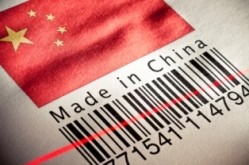China overtakes US to become world’s largest economy in PPP

However, there are differences between the two countries with China significantly lagging in income and consumer expenditure, according to Euromonitor International.
China gaining ground in R&D
It’s White Paper, ‘China Overtakes the US as the World’s Largest Economy’, found while China might be ready to surpass the US in PPP terms, the US outpaces China when it comes to Ease of Doing Business rankings and labour productivity. R&D however is one area where China is gaining ground.
“While the quality of China’s patents and R&D has been called into question by many, there is little doubt in terms of numbers, research and development and patents are an area where China is beginning to gain ground rapidly on the US,” said Sarah Boumphrey, head of strategic, economic and consumer insight, Euromonitor International.
“Total patent grants at its national patents office stood at 256,943 in 2013, from 93,706 in 2008 and catching up with 264,960 granted in the US at its national patents office.
“China has been open about its desire to become a world leader in innovation, stating a goal of becoming an innovation-driven economy by 2020 in its five year plan in 2013. China spent 2.1% of its total GDP on R&D in 2013, up significantly from 1.5% in 2008, and comparing favourably with 2.9% in the US in 2013, which increased only a fraction from 2.8% in 2008.”
China and the US are two of the largest manufacturing economies in the world, yet with a total manufacturing output of $17.8trillion in 2013, China’s manufacturing production was over three times higher than that of the US.
More self-sufficient
China’s emergence as the world’s largest producer of manufactured goods has seen production expanding at an average rate of 15.7% per year between 1997 and 2013.
“China has to become more self-sufficient. It has been trying to shift away from low cost manufacturing towards more skilled work, and in the long term this will help to raise its labour productivity, which is measured as GDP per person employed,” added Boumphrey.
“Currently however, its productivity of $11,753 in 2013 was in stark contrast to the US’s $109,115 in the same year. The main reason behind the difference is that 32.6% of China’s total employed population worked in the labour intensive, low productivity sectors of agriculture, hunting, forestry and fishing in 2013, compared with just 1.4% in the US, which is a much more service based economy.”
The report found in terms of living standards, China still has a long way to go. The spoils of economic growth have not been distributed evenly and income inequality is a challenge for the Chinese government. Yet, income inequality is an issue that both countries have in common.
For example, since 2008, the disposable income of a middle-income household in the US has fallen whilst that of a high income (decile 10) household has increased dramatically. In China all income levels have seen growth, but the low income households are overwhelmingly in rural areas leading to an urban-rural divide.
According to Euromonitor, the structure of the two economies is also quite different. In 2014, private consumption will account for an estimated 68.3% of GDP in the US, compared to 37.2% in China.
US private consumption
Chinese growth has been driven by investment, whereas in the US private consumption has been the driver. A point of similarity is that both countries have seen debt-fuelled growth.
“An unbalanced economy, whether it be weighted towards consumption or investment, or fuelled by debt, is open to risk,” said Boumphrey.
“Too much emphasis on consumption could lead to pressure on the trade balance and inflationary pressures, whereas if investment is not directed to where it’s needed it could be wasted entirely, place pressure on inflation or create bubbles.
“China and the US may be economic rivals, but beyond the headline figures, divergent trends in both countries are apparent. Everything from living standards, consumption patterns, the business environment, productivity, retail and travel markets differ in China from the US.
Yet similarities are there—income inequality is an issue in both countries. Both countries are leaders in the development of renewable energy technologies, manufacturing production and pollution.”
She added, among the intriguing questions in coming years will be whether the Chinese online shopping experience will evolve and become more ‘American’ or will it remain ‘local’ and idiosyncratic.
Source: Euromonitor International
White Paper: China Overtakes the US as the World’s Largest Economy: Impact on Industries and Consumers Worldwide 2014





